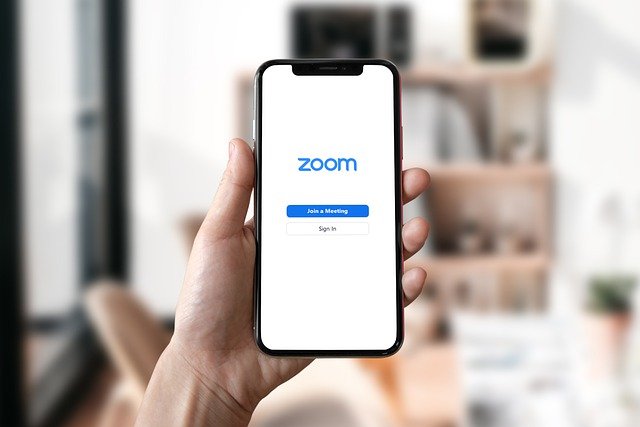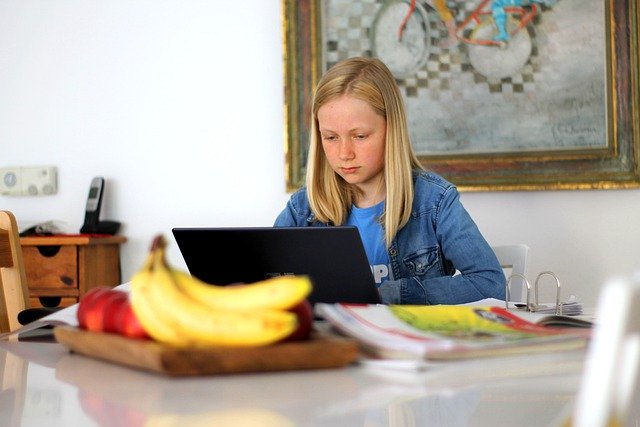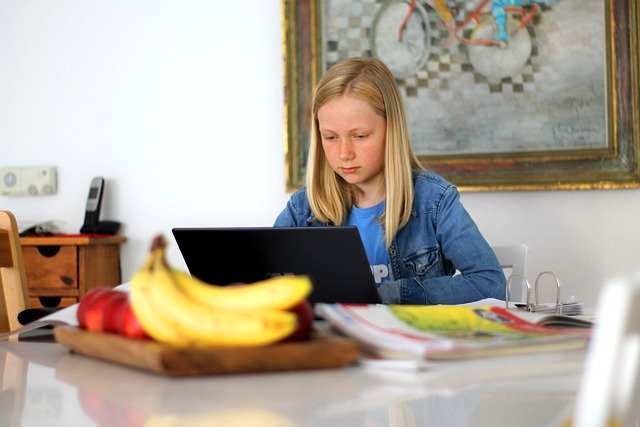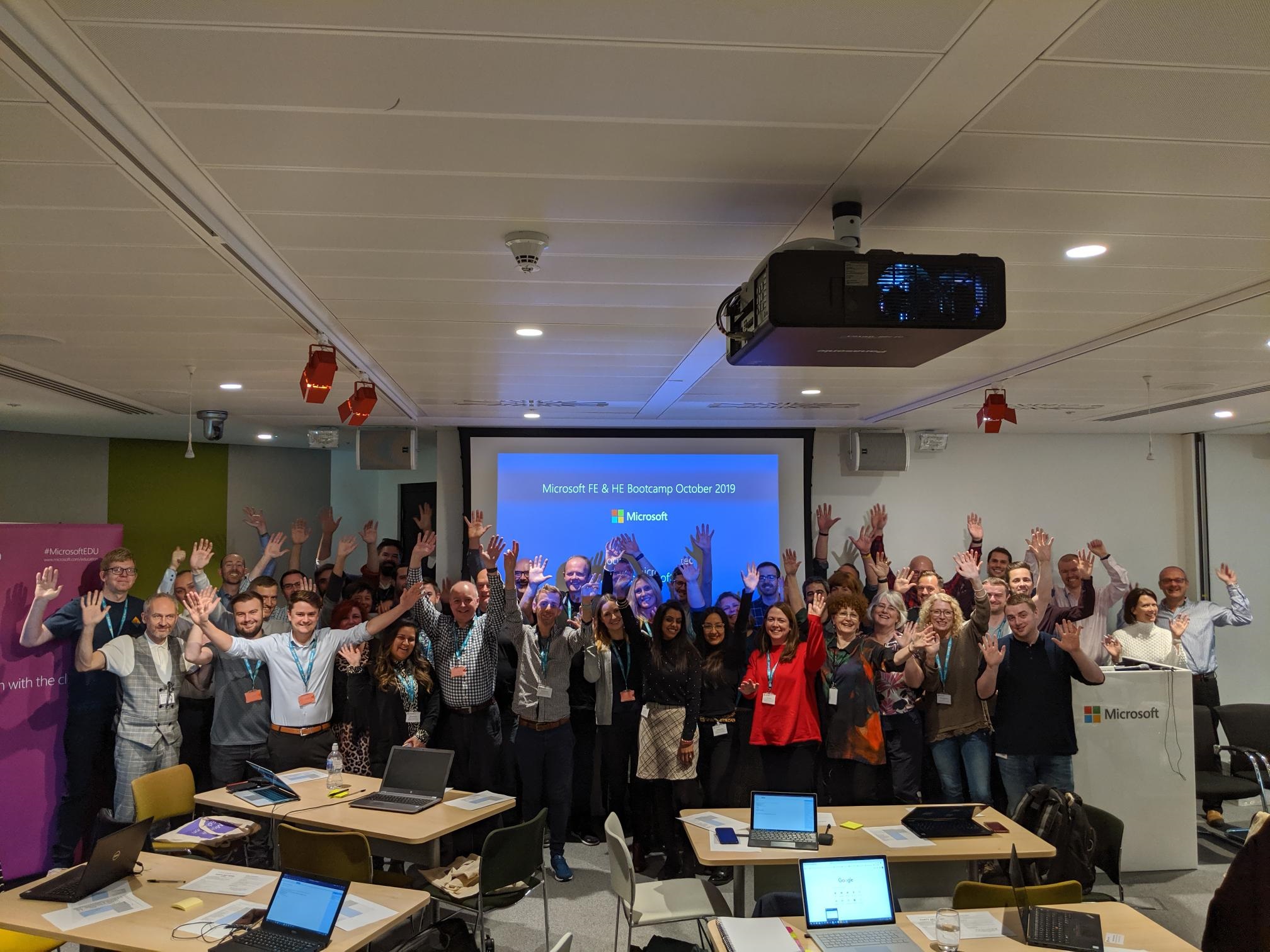
The pandemic has forced so much of our lives to move online. Meetings moved to Zoom, Teams or Google Meet so we could meet online. Lessons and teaching moved online. General working moved online. And so did Continual Professional Development, with educational conferences and summits all moving to a virtual rather than face to face experience. But what were the implications, benefits and drawbacks? And what are the implications for training in schools using video content?
Benefits
The first clear benefit in moving conferences online was simply the fact that it allowed conference events to continue even where it was no longer possible to meet face to face due to the pandemic. The last face to face conference I attended was Digifest 2020, in March, just before the 1st lockdown came into force in the UK, but since then I have attended a number of events all online. It wasnt until the other week that I returned to a face-to-face event. If the events hadnt moved online I would have missed out on the learning opportunities I have received through online events.
Access to events may also be a benefit in that virtual events overcome geographical boundaries where attendance would be difficult and/or costly to overcome if events are face to face only. As such, on reflection, I may have accessed a more diverse range of opportunities because of the move to online events than I would have otherwise accessed had events remaining as they were pre-pandemic.
Drawbacks and Challenges
Motivation is one of the key challenges in my view in relation to online events. I registered for several events over the last year, with these happily taking up allocated space on my calendar, reminding me of their existence. Yet, when time came for a few of these events, the immediately pressing work I had to do meant that I didn’t always attend. All I needed to do was click a link and maybe just listen in, or flick in and out of the event, but I didn’t even do this. Had these been face to face events, this wouldn’t have happened. I may have had to book travel or book accommodation; I may have arranged to meet people, or I may have planned activities in and around the event for before or after. Basically, I would have had intrinsic motivation to ensure I attended to avoid financial or opportunity losses, beyond the loss of the learning opportunities presented by the event. This intrinsic motivation just doesn’t exist to the same extent with online events. I suspect event organisers will have plenty of data to show the drop off rate or non-attendance rate for online events is significantly higher than that for face-to-face events.
Video based training in schools
One of the key challenges for conferences is engagement. We may create awareness or training materials but how do we ensure that teachers or other staff actually engage with the content, and watch it? Having the content isnt enough if it isnt being watched or if it isnt then resulting in changes in teaching or other behaviours. Personally, I don’t have an answer to this other than to suggest the below:
- We need to make the cost of watching low, by keeping content short and simple. If the cost is high, it is likely staff will always prioritise other work which is immediately to hand over training materials which may have an unknown future benefit.
- We need to vary the content or style of materials such that they do not become boring or predictable. Where content is always the same or presented in the same way it quickly becomes boring and predictable and therefore disengages users.
- We need to seek ways to engage users and make watching content worthwhile and interesting. This could for example be through extrinsic motivation associated with prizes, electronic badges or department-based competition.
- We need to build in opportunities for collaboration and discussion beyond the content materials. Content has a greater opportunity of sticking if it is internalised and discussing and debating with others is likely to be one of the best ways of helping this happen.
Conclusions
I suspect online events and online based training is very much here to stay. If we consider it as simply another tool, I think this is a good thing, but I think we need to be careful of considering it as “the” tool. I have long seen the enterprise world push staff towards online based training content, with staff complaining and then proceeding to find creative ways to complete the training without actually spending the relevant time or actually learning anything. I have seen the same in some schools with data protection and even safeguarding training becoming an online tick box exercise rather than a valuable learning experience.
I am also a little concerned regarding the potentially high costs of developing lots of good training content only to receive limited engagement from busy staff.
I have a positive view regarding the potential, in an ideal world, of well-developed video and online training materials for use in schools. I also have a realistic view to temper this, in relation to likely engagement given the busy lives of staff in schools. Is mandating the number of hours content consumed per year per teacher a possible option? Have seen this before, and I my view no, but let’s leave that one here for now.
For now online training and events are here to stay and for me, as long as they are part of a balanced programme of opportunities, also including face to face events, then I think this is a good thing.





 Schools all over the world have had to switch very quickly to remote learning. This has resulted in all manner of challenges in relation to hardware, software, deployment, use in lessons, staff IT skills and EdTech pedagogy and a variety of others. Over this short period of time, I feel a huge amount has been learnt. That said I think once the governmental lockdowns are lifted, a lot of what happens in schools will attempt to return back towards the way it used to be. This attempt to return towards the previous normal is natural, it is an attempt to return towards what is comfortable, known and familiar versus the current situation which is uncomfortable and unfamiliar for many. The danger here is that we may lose the lessons learnt from the last couple of months. As such I thought it appropriate to write a post focussing on the learning points, or at least the 6 key learning points, I believe we need to take from the Covid19 crisis and the resultant period of remote learning.
Schools all over the world have had to switch very quickly to remote learning. This has resulted in all manner of challenges in relation to hardware, software, deployment, use in lessons, staff IT skills and EdTech pedagogy and a variety of others. Over this short period of time, I feel a huge amount has been learnt. That said I think once the governmental lockdowns are lifted, a lot of what happens in schools will attempt to return back towards the way it used to be. This attempt to return towards the previous normal is natural, it is an attempt to return towards what is comfortable, known and familiar versus the current situation which is uncomfortable and unfamiliar for many. The danger here is that we may lose the lessons learnt from the last couple of months. As such I thought it appropriate to write a post focussing on the learning points, or at least the 6 key learning points, I believe we need to take from the Covid19 crisis and the resultant period of remote learning. During this crisis we have seen communities come together to support each other, for example in the weekly clap for the NHS. We have seen lots shared online on how to remain healthy and on wellbeing. There has been recognition of the difficulties and challenges being experienced by teachers, parents and students, plus a real sense of community has become apparent. The Covid19 crisis has been a turbulent time for many, in uncertainty, in personal loss and in change. Even when lockdown is eased many will continue to have to deal with these issues and therefore it is important that we continue to be cognizant of the human element of schools and of the importance of community spirit and support. This includes the health, both mental and physical, plus the general wellbeing of students, staff, parents and the wider school communities. Before learning, before curricula, before assessment for or of learning, before everything, people come first, adults or children. We need to ensure we consider them first in all we do, both online or in real life.
During this crisis we have seen communities come together to support each other, for example in the weekly clap for the NHS. We have seen lots shared online on how to remain healthy and on wellbeing. There has been recognition of the difficulties and challenges being experienced by teachers, parents and students, plus a real sense of community has become apparent. The Covid19 crisis has been a turbulent time for many, in uncertainty, in personal loss and in change. Even when lockdown is eased many will continue to have to deal with these issues and therefore it is important that we continue to be cognizant of the human element of schools and of the importance of community spirit and support. This includes the health, both mental and physical, plus the general wellbeing of students, staff, parents and the wider school communities. Before learning, before curricula, before assessment for or of learning, before everything, people come first, adults or children. We need to ensure we consider them first in all we do, both online or in real life. I have always found the global educator community to be very helpful especially on Twitter, which has been my go-to place for a number of years. I feel, during this crisis, the Global Educator community has really stepped up its game. I have heard new voices sharing their thoughts, ideas and resources while existing voices have generated new platforms to share including new podcasts and virtual PD events. There has also been lots of collation of resources going on, with people trying to make it easier to find what you need by grouping it together in once place, using Wakelet for example. It is important that we continue this and that we continue to make more people aware of the resources, and in particular the support available from educators across the world through the wonders of Technology. I always remember Mark Andersons description of twitter as the “best staffroom in the world” and during this crisis I feel the online community of educators has only got better. I think signposting the opportunities and resources available from the global educator community post Covid19 will be critical. I think it is worth mentioned that this also links back to point 1 and a source of support, someone to listen, etc, to help with wellbeing where you need an impartial/independent view.
I have always found the global educator community to be very helpful especially on Twitter, which has been my go-to place for a number of years. I feel, during this crisis, the Global Educator community has really stepped up its game. I have heard new voices sharing their thoughts, ideas and resources while existing voices have generated new platforms to share including new podcasts and virtual PD events. There has also been lots of collation of resources going on, with people trying to make it easier to find what you need by grouping it together in once place, using Wakelet for example. It is important that we continue this and that we continue to make more people aware of the resources, and in particular the support available from educators across the world through the wonders of Technology. I always remember Mark Andersons description of twitter as the “best staffroom in the world” and during this crisis I feel the online community of educators has only got better. I think signposting the opportunities and resources available from the global educator community post Covid19 will be critical. I think it is worth mentioned that this also links back to point 1 and a source of support, someone to listen, etc, to help with wellbeing where you need an impartial/independent view. I think many schools are asking themselves the above question as they look to improve on what they currently offer and as they prepare for what could be a long period where at least some students will be working remotely due to isolation resulting from Covid19 symptoms.
I think many schools are asking themselves the above question as they look to improve on what they currently offer and as they prepare for what could be a long period where at least some students will be working remotely due to isolation resulting from Covid19 symptoms.
 Over the last week or so since schools closed teachers who previously hadn’t had much experience of creating video learning content have suddenly found themselves creating content. Some of this video has been live through Zoom, Hangouts or Teams, or has been posted for on demand access through YouTube, Facebook, Twitter, FlipGrid and even TikTok or through school Virtual Learning Environments. Although discussions of flipped or blended learning have been ongoing for some time, Covid-19 has led to a peak in interest plus to a rapid upskilling of teachers driven by a specific and immediate need. With this greater interest and skill level I would predict that we will see greater use of video, and in particular pre-prepared video which can be used or accessed on demand within schools and learning, similar to the lecture capture concept which has become more common in Higher Education.
Over the last week or so since schools closed teachers who previously hadn’t had much experience of creating video learning content have suddenly found themselves creating content. Some of this video has been live through Zoom, Hangouts or Teams, or has been posted for on demand access through YouTube, Facebook, Twitter, FlipGrid and even TikTok or through school Virtual Learning Environments. Although discussions of flipped or blended learning have been ongoing for some time, Covid-19 has led to a peak in interest plus to a rapid upskilling of teachers driven by a specific and immediate need. With this greater interest and skill level I would predict that we will see greater use of video, and in particular pre-prepared video which can be used or accessed on demand within schools and learning, similar to the lecture capture concept which has become more common in Higher Education.
 For me our students online social media habits have to date been seen in a very negative light, being thought of as being anti-social or changing in their behaviour or attention spans. The last week has however shown how the online world can provide opportunities for socialising as much as the real world can, albeit in different ways. We have seen virtual pubs, lots of online Karaoke, community groups and much more form quickly online to overcome the challenges of social distancing and the potential harm of individual isolation. Thinking about children, and how parents may be overprotective and concerned of the dangers in the real world, therefore leading our students to be more isolated than they would have been in the past; For me I remember parental comments about returning home “before the street lights come on”. This kind of freedom to socialise in real life isn’t afforded in anyway to the same extent for the current generation of children. Is it therefore any wonder they would look to use the online world? I think going forward there will be a greater acceptance of the benefits of the hyper connectedness which our students already experience through the many apps they use.
For me our students online social media habits have to date been seen in a very negative light, being thought of as being anti-social or changing in their behaviour or attention spans. The last week has however shown how the online world can provide opportunities for socialising as much as the real world can, albeit in different ways. We have seen virtual pubs, lots of online Karaoke, community groups and much more form quickly online to overcome the challenges of social distancing and the potential harm of individual isolation. Thinking about children, and how parents may be overprotective and concerned of the dangers in the real world, therefore leading our students to be more isolated than they would have been in the past; For me I remember parental comments about returning home “before the street lights come on”. This kind of freedom to socialise in real life isn’t afforded in anyway to the same extent for the current generation of children. Is it therefore any wonder they would look to use the online world? I think going forward there will be a greater acceptance of the benefits of the hyper connectedness which our students already experience through the many apps they use. Although most of the above is positive I do have some concerns. I am worried that as people rushed to find solutions to overcome isolation, maintain social connection, etc, that they didn’t show due care for the protection of their personal data and for the resultant cyber risk. Great communities may have formed overnight using free services but what data did we give away regarding these groups and the individuals within them. It worries me that when things do settle down, we may realise that some decisions made have negative consequences. I suspect the pendulum which swings between individual privacy and public good, and which previously tended towards individual privacy may have shifted somewhat and may now tend more towards the public good. In some ways this may be a good thing, but what may be a good thing in a crisis may not be a good thing when everything returns to normality or near normality.
Although most of the above is positive I do have some concerns. I am worried that as people rushed to find solutions to overcome isolation, maintain social connection, etc, that they didn’t show due care for the protection of their personal data and for the resultant cyber risk. Great communities may have formed overnight using free services but what data did we give away regarding these groups and the individuals within them. It worries me that when things do settle down, we may realise that some decisions made have negative consequences. I suspect the pendulum which swings between individual privacy and public good, and which previously tended towards individual privacy may have shifted somewhat and may now tend more towards the public good. In some ways this may be a good thing, but what may be a good thing in a crisis may not be a good thing when everything returns to normality or near normality.